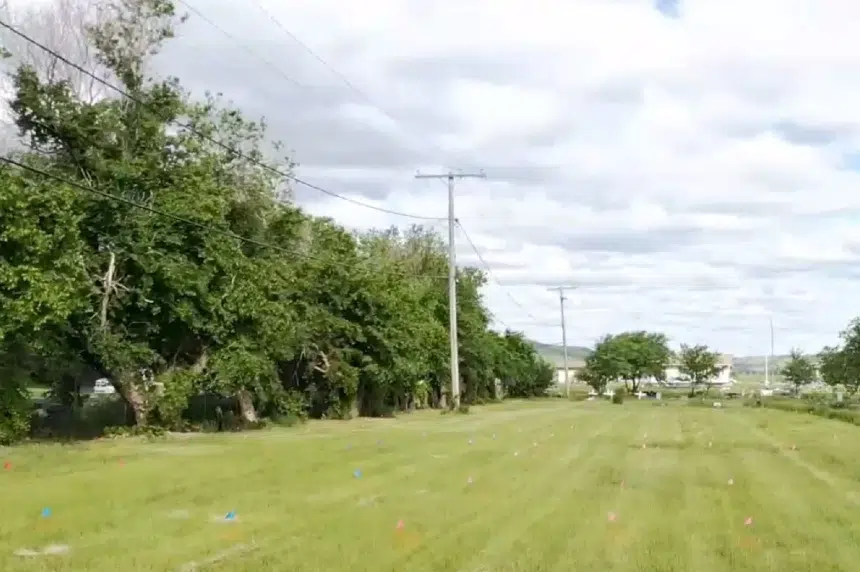Chief Delorme says ‘reset’ needed on reconciliation journey
 |
| Marking the Graves (Cowessess First Nation/Submitted) |
Cowessess First Nation Chief Cadmus Delorme was not expecting the number of unmarked graves on the former Marieval Indian Residential School site to be as high as 751.
The search involved the use of ground-penetrating radar. Flags mark the positions of the once-concealed burial plots.
Delorme told Gormley on Friday morning that when the search began, technicians brought just 200 flags, running out on the first day.
“We’re like, ‘What are we getting into here? What is the reality of this?’ And by the end of the week, it got very emotional, very heavy,” Delorme said.
At first glance, the burial ground appears to be an empty field. Delorme recalled running through the area as a child. “Just kids being kids,” he said. But it was known that the graves were beneath their feet. Oral stories told of their existence.
“We were always told, ‘Walk on the path, walk on the path,’ ” he said.
Delorme said the Oblates arrived in 1886. (Catholic Missionary Oblates of Mary Immaculate) That location was the gravesite for the Roman Catholic Church, so there were non-Indigenous people buried there as well. The Marieval Indian Residential School opened in 1898.
He said the search started June 2 on the east side of the field, going west.
“We were doing two metre by two metre the first day, and then we were like, ‘Oh, maybe we should do one metre by one metre,’ ” Delorme said.
That’s when the flags were planted and it became apparent there were children buried.
“OK, so one metre by one metre, that means that there’s not full adults here,” Delorme said.
In 1970, the burial ground became a community cemetery, no longer under control of the Oblates and priests, Delorme said. Grave markers from that point on are there today.
“So that’s why it’s somewhat challenging to talk about because it is the community gravesite today. We honour that,” he said. “But there was almost 80 years where the priests had a say, who did and who didn’t belong in that gravesite.”
Delorme’s advice for people to play a role in reconciliation is a mental “reset.”
“There is real anger and pain amongst many of my people. And that anger and pain is there because of the ignorance and the accidental racism and it just triggers,” he said.
He said Indigenous people are “trying to get out of this dependence state,” while also focusing on political sovereignty and cultural rejuvenation.
When asked about those who wish to “cancel” Canada Day, Delorme said he was “in no capacity to tell anybody what they should or should not celebrate.”
Delorme said while the fruits of colonialism like the residential school system, Indian Act, and ’60s Scoop were created in the past, people of today have inherited the aftermath.
“We must accept the good and what we inherited,” he said.
He challenged people to read the Calls to Action by the Truth and Reconciliation Commission, share them, and act on any of them that “click with you.”
“We’ve got some work to do,” he said, “and if we all just grab a little bit of it, this country would and will be the greatest in the world.”
**
Orange Shirt Day happens every year on September 30th.
 |
With
the recent spike in interest for Orange Shirt Day events the team is
designing special programming for both primary grades and ages 13+. In order to lock in a spot and date for your class or corporation, visit: website. |






















No comments:
Post a Comment
Please: Share your reaction, your thoughts, and your opinions. Be passionate, be unapologetic. Offensive remarks will not be published. We are getting more and more spam. Comments will be monitored.
Use the comment form at the bottom of this website which is private and sent direct to Trace.